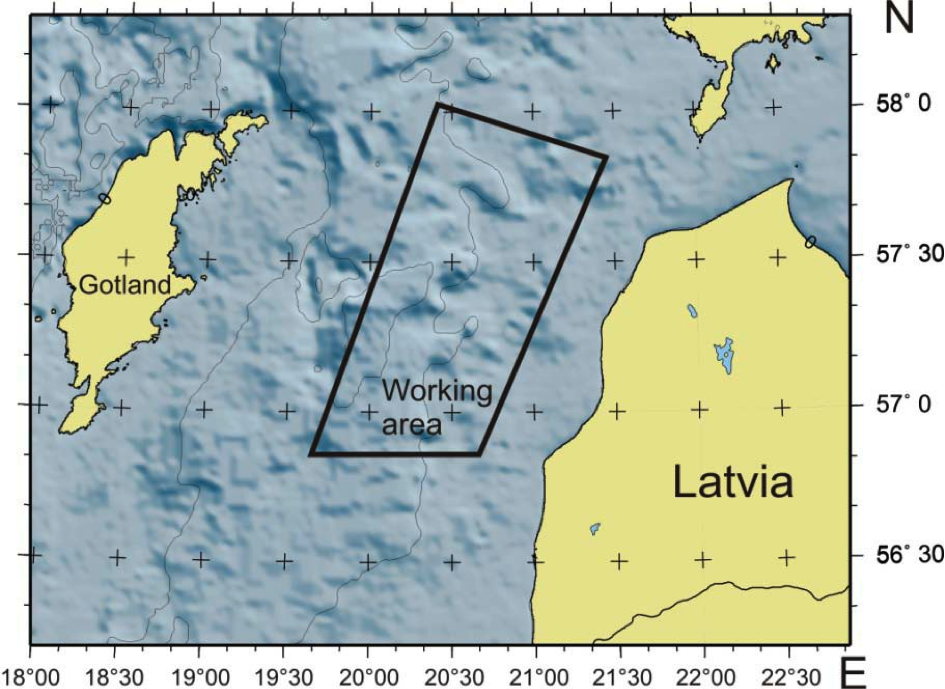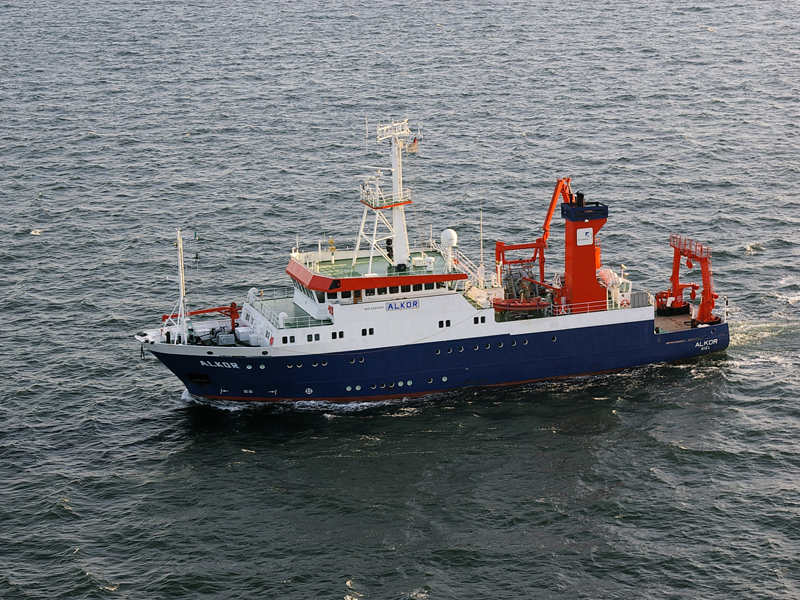ALKOR AL422
- Area:
- Baltic Sea, Gotland Basin
- Time:
-
16.08.2013 - 14.09.2013
- Institution:
- GEOMAR
- Chief scientist:
- Olaf Pfannkuche
Eutrophication and the associated spreading of hypoxic and sulphidic habitats in the central Baltic Sea are controlled - in addition to physical mixing processes - mainly by the nutrient release from sediments. Despite this significance only very few measurements have been conducted to quantify this internal nutrient load. First in situ measurements using benthic observatories during ALKOR cruise 355 in June 2010 indicated that, aside from the deep basins, the sediments located within the oxycline, which are densely covered with bacterial mats, are of previously unknown significance for the return of reactive nitrogen and phosphorus to the water column.
ALKOR cruise 422 takes place at a time of year when part of the summer cyanobacteria bloom is deposited on the sea floor, leading to increased oxygen consumption in the deeper water layers. The research cruise comprises biogeochemical, geochemical and microbiological investigatons in the eastern Gotland Basin of the Baltic Sea. The work will be carried out on the same stations of AL 355 along a depth transect ranging from 50 to 170m water depth, including oxic to anoxic/sulfidic bottom water conditions.
The expedition is conducted within the framework of three different projects: OCEANS, the Helmholtz alliance ROBEX and SFB 754. The main objectives are in situ material flux measurements at the sea floor along a depth section which covers the entire O2 spectrum, from oxic to anoxic. More specific objectives include: in situ experiments using Lander for phosphorus uptake and release of bacterial mats under fluctuating bottom water O2 conditions, and their significance for the recycling of reactive nitrogen during dissimilatory nitrate reduction to ammonium (DNRA) or the nitrogen loss during denitrification and anammox. Other objective is the quantification of benthic nitrogen fractionation.
The ROBEX component will also include the testing of new in situ measurement technologies (Topic 4000), such as an in situ ammonia analyzer and subsystems of an in situ mass spectrometer.
Working area in the eastern Gotland Basin.
Cyano bacteria bloom in the Gotland Basin in July. Photo: Olaf Pfannkuche, GEOMAR
Recovery of a BIGO Lander. Photo: Olaf Pfannkuche, GEOMAR



